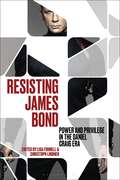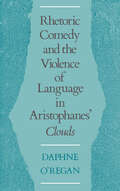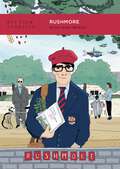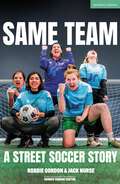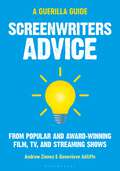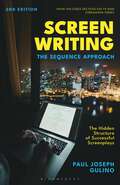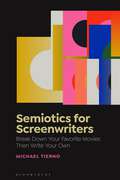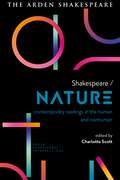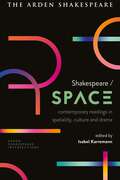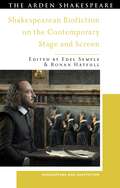- Table View
- List View
Republican Citizens, Precarious Subjects: Representations of Work in Post-Fordist France (Studies in Modern and Contemporary France #7)
by Jeremy LaneOver recent decades concerns at the increased scarcity and precarity of salaried employment have dominated political struggles, theoretical debates and cultural representations in France. This study argues that such concerns are evidence of a profound shift in contemporary French economy, culture and society. Engaging with work in political economy and sociology, the book sketches a new interpretative framework, the better to understand the nature and implications of these profound changes. It examines the challenges such changes have posed to fundamental French republican values, arguing they have opened up a rift between older notions of French republican citizenship and the precarious forms of subjectivity characteristic of post-Fordist labour. The book traces the symptoms of this rift in a range of cinematic and literary representations of the contemporary workplace, as these depict the dilemmas faced, the trajectories followed, and the geographical regions inhabited by French workers of different ages, sexes, social classes, and ethnicities.
Repulsion (Devil's Advocates)
by Jeremy CarrRoman Polanski’s Repulsion (1965), starring Catherine Deneuve as a repressed and tormented manicurist, is a gripping, visually inventive descent into paranoia and self-destructive alienation. Emblematic of recurrent Polanski motifs, evinced in his student short films, in his striking debut feature, Knife in the Water (1962), and in subsequent features like Death and the Maiden (1994), Repulsion is a tour de force examination of crippling anxiety and the sinister potency of inanimate objects. Repulsion amplifies the realm of psychological horror by evoking the seething impact of increasing delusion, literal and figurative seclusion, and the consequences of one woman’s foreboding sensitivity to the unsettling world that surrounds her. This Devil’s Advocate considers Repulsion within the context of familiar horror tropes and the prevailing qualities of Polanski’s broader oeuvre. Drawing on the research of Sigmund Freud, Julia Kristeva, Barbara Creed and others, concerning issues of abjection, the ‘monstrous-feminine’, and the psychology of horror spectatorship, this text focuses on central themes of isolation, sexuality and setting. Bookended by introductory biographical details and concluding with a roundup of the film’s reception, Jeremy Carr situates Repulsion within the horror genre at large as well as its various off-shoots, such as the rape/revenge subgenre. There is also an analysis of the film’s technical qualities, from its sound design to its brilliantly low-key special effects, all of which define the film as Polanski’s most audaciously stylish realisation of dread and unease.
Research Handbook on the Law of Professional Football Clubs
This original Research Handbook examines the key legal aspects of a professional football club’s actions. Reflecting also on the role of key governing bodies such as UEFA, the Handbook informs and contributes to the ongoing debate surrounding the governance and behaviours of professional football clubs. By placing professional clubs at the centre of the analysis, the Handbook offers an extensive overview of how law, particularly at a European level, is applied to professional football. Chapters explore key actors within the industry, from prominent governing bodies to players, examining how significant club changes such as transfers affect the economic and legal management of clubs. At a time when professional football is coming under increasing scrutiny, this Handbook will encourage critical thinking on the future of clubs’ design, organisation and function. This illuminating Research Handbook will be of interest to law and business students endeavouring to investigate sports law and governance. It will additionally be beneficial to policymakers, along with legal and business actors, who are working with professional football clubs and seeking to reflect critically on industry features and legalities.
Resisting James Bond: Power and Privilege in the Daniel Craig Era
Beginning with Casino Royale (2006) and ending with No Time to Die (2021), the Daniel Craig era of James Bond films coincides with the rise of various justice movements challenging deeply entrenched systems of inequality and oppression, ranging from sexism, racism, and immigration to 2SLGBTQIA+ rights, reproductive justice and climate change. While focus is often placed on individual actions and institutional policies and practices, it is important to recognize the role that culture plays within these systems. Mainstream film is not simply 'mindless' entertainment but a key part of a global cultural industry that naturalizes and normalizes power structures.Engaging with these issues, Resisting James Bond is a multidisciplinary collection that explores inequality and oppression in the world of 007 through a range of critical and theoretical approaches. The chapters explore the embodiment and disembodiment of power and privilege across the formal, narrative, cultural and geopolitical elements that define the revisionist-reversionist world of Daniel Craig's Bond.
A Retake Please: Filming Western Approaches
by Pat JacksonThis fascinating memoir is a unique contribution to the history of film and cinema. At its centre is the story of the making of the British film classic Western Approaches, the first story documentary in Technicolor, totally enacted by amateurs. It was nominated for an Oscar in the category ‘Best Film from any Source’ and has influenced and inspired film-making to this day. It was acclaimed a masterpiece when it was released in December 1944 and fifty years later Philip French wrote in The Observer: ‘It remains a milestone in our cinema and an exciting, vibrant cinematic experience.’
Revolution in Paradise: Veiled Representations of Jewish Characters in the Cinema of Occupied France
by Yehuda MoralyThe era of the German Occupation of France constituted, surprisingly, a golden age for the arts: literature, theater, popular music and cinema. These works of art seem to be devoid of political impact. The widespread trend of unrealistic and fantastic art during this period is explained by some scholars as the artists escape from the omnipotent eye of German censorship. The purpose of the book is to show that, contrary to the accepted view, some of these films were intimately linked to the political situation. They convey the demonization of characters that, while not specifically presented as Jews nevertheless manifested anti-Semitic stereotypes of the Jew as ugly, rootless, low, hypocritical, immoral, cruel and power hungry. All five movies analysed (Les Inconnus dans la maison, dir. Henri Decoin, 1942; Les Visiteurs du Soir, dir. Marcel Carne, 1942; L'Eternel retour, dir. Jean Delannoy, 1943; Les Enfants du Paradis, dir. Marcel Carne, 1943) present characters not identified as Jews but who exhibit negative Jewish traits, in contrast to the aristocratic characters whom they aspire to emulate. They demonstrate, implicitly, central themes of explicit anti-Semitic propaganda. Yehuda Moraly addresses two current major misconceptions regarding the Cinema of Occupied France: (1) that the accepted view that there were almost no explicitly Jewish characters in the cinema of that time and place is patently incorrect; and (2) that the feature films of Occupied France were not as it is commonly thought free of the propaganda messages that permeated the press, the radio and documentary films. Analysis of these films brings out the contradictory nature of European anti-Semitism. On one hand, the Jew is the anti-Christ, throttling the world with disgusting materialism while on the other hand, he is representative of an ancestral stifling morality, which it is time to abolish.
Rhetoric, Comedy, And The Violence Of Language In Aristophanes' Clouds
by Daphne O'ReganThis is an intelligent and unusually thought-provoking reading of Aristophanes'Clouds. O'Regan focuses onlogos, or the power of argument, and its effects, and on the self-awareness of the secondCloudsas a comedy oflogosdirected toward an audience made resistant by devotion to the body. Within and without the play,logosmeets defeat when confronted with human nature and desire. The argument conveys much insight into fifth-century thought and the play's workings, the more so because it balances rhetoric with comedy, and reminds the reader that this is a comiclogos--explored in the comic mode, and connected with the intentions and vicissitudes of the first and secondClouds.
Rushmore (BFI Film Classics)
by Kristi Irene McKimEarning critical acclaim and commercial success upon its 1998 release, Rushmore-the sophomore film of American auteur Wes Anderson-quickly gained the status of a cult classic. A melancholic coming-of-age story wrapped in comedy drama, Rushmore focuses on the efforts of Max Fischer (Jason Schwartzman)-a brazen and precocious fifteen-year-old-to find his way. Restless, energetic, struggling, and overcompensating for his insecurities, Max pursues a dizzying range of possible futures, leading him into the orbit of local steel magnate Herman Blume (Bill Murray), elementary school teacher Rosemary Cross (Olivia Williams), and a host of cooperative schoolmates who help him to stage lavish film-derivative plays. Kristi McKim's compelling study of the film argues that despite the film's titular call for haste and excess (rush/more), it challenges a drive toward perfectionism and celebrates the quiet connections that defy such passion and speed. After establishing Rushmore's history and reception, McKim closely reads Rushmore's energetic musical montages relative to slower moments that introduce tenderness and ambiguity, in a form subtler than Max's desire-built drive or genre-based plays. Her analysis offers an urgent corrective to what might be perceived as an endearing portrait of privilege that perpetuates a status quo power. Drawing out Rushmore's subtleties that soften, temper, ease, expand, and equalize the film's zeal, she reads the film with a generosity learned from the film itself.
Same Team — A Street Soccer Story (Modern Plays)
by Robbie Gordon Jack NurseNo.1 – Players always come firstNo.2 – We look to the futureNo.3 – We never leave anyone behindNo.4 – We place others before ourselvesNo.5 – We keep our promisesFive women have come together with one goal, one dream. Coming from very different backgrounds in life they have to work together as a team if they want to do what no one from Scotland has ever done before. To win the Homeless World Cup, and bring the trophy home.A joyful story of community and teamwork, building connections between each other and homelessness. Written with the Dundee Women's Street Soccer Team, Robbie Gordon and Jack Nurse's Same Team - A Street Soccer Story is an uplifting whirlwind through the highs and lows of homeless football.This edition was published to coincide with the world premiere at the Traverse Theatre in Edinburgh, in December 2023.
SAW (Devil's Advocates)
by Ben PooleLike all game changers within the horror genre, SAW was an independent success, a low-budget champion that flourished without the patronage of a big studio. Not bad for the most successful horror franchise ever, which has spawned subsidiary media and masses of merchandise, including a theme park rollercoaster ride. What is it about SAW that attracted such a following? In his contribution to the "Devil's Advocates" series, Ben Poole considers the SAW phenomenon from all aspects of film and media studies – from its generic pedigree in both literature and film, to the visceral audience pleasures ("what would I do?") of the text, to the contrasting representations of men and women and the film's implicit criticism of masculinity.
Screenwriters Advice: From Popular and Award Winning Film, TV, and Streaming Shows (The Guerilla Filmmaker’s Handbooks)
by Mr Andrew Zinnes Ms Genevieve JolliffeThis book looks at the most important part of the filmmaking process from the point of view of those who grind away at a keyboard or notepad trying to bring new ideas and perspectives to an increasingly diversified world. Using The Guerilla Film Makers Handbook's tried and true Q&A style, with selected screenwriters, creating an engaging and easily digestible conversational feel, this book chronicles story theory, formatting, business issues and the creative process itself. Whether you're a seasoned scribe or an inexperienced writer, this book will give you perspectives and tips to get your creative juices flowing and make your story happen.
Screenwriting: The Sequence Approach
by Professor Paul Joseph GulinoA substantial update of the previous edition, Screenwriting: The Sequence Approach deconstructs recent feature films and offers a new section analysing popular television series.A proven screenwriting method in emotionally engaging an audience, the sequence approach emphasises the underlying motives of each story plot to better convey its relation to the work as a whole. In this expanded second edition, Paul Gulino includes analyses of recent noteworthy films and serial dramas, such as Parasite, Barry and Breaking Bad, with an eye to how they manage audience attention, convey vital information and deliver their emotional payloads. The aim of the book is to help writers move readily from the feature film to the serial form, mastering both. It is perfect for both beginning writers and those with experience in the feature screenplay form.
Scrooge (Devil's Advocates)
by Colin FlemingThis Devil’s Advocate explores the cinematic wonders of Brian Desmond Hurst’s much loved 1951 adaptation of A Christmas Carol, Scrooge, through the prism of horror cinema, arguing that the film has less in common with cosy festive tradition than it does with terror cinema like James Whale’s Bride of Frankenstein, Robert Weine’s The Cabinet of Dr. Caligari, and F.W. Murnau’s Faust. Beginning with Charles Dickens himself, a prolific writer of ghost stories, with A Christmas Carol being but one of many, Colin Fleming then considers earlier cinematic adaptations including 1935’s folk-horror-like Scrooge, before offering a full account of the Hurst/Sim version, stressing what must always be kept at the forefront of our minds: this is a ghost story.
Semiotics for Screenwriters: Break Down Your Favorite Movies Then Write Your Own
by Michael TiernoYou're trying to finish a screenplay, but there's a voice in your ear whispering, “You should know more about how cinema story works.” Perhaps you've heard how many successful screenwriters deconstruct or “break down” films and study them. You'd like to try this method but ask yourself, “How do I start?” Semiotics for Screenwriters can help you with this daunting task by taking you on a unique journey through 3 classic films - It's a Wonderful Life, Lost in Translation, and Get Out - that shows you the hidden universal language of plot, character, and theme at work in them. This method will reveal the mechanics of cinema story, then show you how to apply this knowledge to your own screenwriting. Semiotics is a powerful system of analysis applied in many fields, including literature and psychology. In this book you'll learn to deploy this method to break down classic films then apply it to writing, developing and correcting your own screenplays.
Shadow of a Doubt
by Diane NegraShadow of a Doubt (1943) was British-born Alfred Hitchcock’s sixth American film and the one that he at various times identified as his favourite and his best. It seems likely that one of the reasons he liked Shadow so much is that is an extraordinarily well-ordered narrative system, a meticulous cause and effect chain that melds its various scenes and sequences together to form a unified narrative that is highly effective in building suspense and cultivating identification with characters. This scrupulously organized film operates as a masterclass on principles of narrative design while generating resonant commentary on the nature of family life. This book redresses the deficit of sustained critical attention paid to Shadow even in the large corpus of Hitchcock scholarship. Analysing the film’s narrative system, issues of genre, authorship, social history, homesickness and ‘family values’, Diane Negra shows how the film’s impeccable narrative structure is wedded to radical ideological content, linking the film’s terrors to the punishing effects of looking beyond conventional family and gender roles. This book understands Shadow as an unconventionally female-centred Hitchcock text and a milestone film that marks the director’s emergent engagement with the pathologies of violence in American life and opens a window into the placement of femininity in World War II consensus culture and more broadly into the politics of mid-century gender and family life.
Shakespeare / Nature: Contemporary Readings in the Human and Non-human (Arden Shakespeare Intersections)
by Lucy Munro Professor Sonia Massai Dr Farah Karim Cooper Professor Gordon McMullanShakespeare / Nature sets new agendas for the study of nature in Shakespeare's work. Offering a rich exploration of the intersections between the human and non-human worlds, the chapters focus on the contested and persuasive language of nature, both as organic matter and cultural conditioning.Rooted in close textual analysis and historical acuity, this collection addresses Shakespeare's works through the many ways in which 'nature' performs, as a cultural category, a moral marker and a set of essential conditions through which the human may pass, as well as affect. Addressing the complex conditions of the play worlds, the chapters explore the assorted forms through which Shakespeare's nature makes sense of its narratives and supports, upholds or contests its story-telling. Over the course of the collection, the contributors examine plays including Macbeth, Julius Caesar, The Tempest, The Taming of the Shrew, Othello, Love's Labour's Lost, Hamlet, Timon of Athens and many more. They discuss them through the various lenses of philosophy, historicism, psychoanalysis, gender studies, cosmography, geography, sexuality, linguistics, environmentalism, feminism and robotics, to provide new and nuanced readings of the intersectional terms of both meaning and matter.Approaching 'nature' in all its multiplicity, this collection sets out to examine the divergent and complex ways in which the human and non-human worlds intersect and the development of a language of symbiosis that attempts to both control and create the terms of human authority. It offers an entirely new approach to the subject of nature, bringing together disparate methods that have previously been pursued independently to offer a shared investment in the intersections between the human and non-human worlds and how these discourses shape and condition the emotional, organic, cultural and psychological landscapes of Shakespeare's play worlds.
Shakespeare / Space: Contemporary Readings in Spatiality, Culture and Drama (Arden Shakespeare Intersections)
by Lucy Munro Professor Sonia Massai Dr Farah Karim Cooper Professor Gordon McMullanShakespeare / Space explores new approaches to the enactment of 'space' in and through Shakespeare's plays, as well as to the material, cognitive and virtual spaces in which they are enacted. With contributions from 14 leading and emergent experts in their fields, the collection forges innovative connections between spatial studies and cultural geography, cognitive studies, memory studies, phenomenology and the history of the emotions, gender and race studies, rhetoric and language, translation studies, theatre history and performance studies. Each chapter offers methodological reflections on intersections such as space/mobility, space/emotion, space/supernatural, space/language, space/race and space/digital, whose critical purchase is demonstrated in close readings of plays like King Lear, The Comedy of Errors, Othello and Shakespeare's history plays. They testify to the importance of space for our understanding of Shakespeare's creative and theatrical practice, and at the same time enlarge our understanding of space as a critical concept in the humanities. It will prove useful to students, scholars, teachers and theatre practitioners of Shakespeare and early modern studies.
Shakespearean Biofiction on the Contemporary Stage and Screen (Shakespeare and Adaptation)
by Professor Mark Thornton BurnettThis book is the first edited collection to explore Shakespeare's life as depicted on the modern stage and screen. Focusing on the years 1998-2023, it uniquely identifies a 25-year trend for depicting Shakespeare, his family and his social circle in theatre, film and television. Interrogating Shakespeare's afterlife across stage and screen media, the volume explores continuities and changes in the form since the release of Shakespeare in Love, which it positions as the progenitor of recent Shakespearean biofictions in Anglo-American culture. It traces these developments through the 21st century, from pivotal moments such as the Shakespeare 400 celebrations in 2016, up to the quatercentenary of the publication of the First Folio, whose portrait helped make the author a globally recognisable icon. The collection takes account of recent Anglo-American socio-political, cultural and literary concerns including feminism, digital media and the biopic and superhero genres. The wide variety of works discussed range from All is True and Hamnet to Upstart Crow, Bill and even The Lego Movie. Offering insights from actors, dramatists and literary and performance scholars, it considers why artists are drawn to Shakespeare as a character and how theatre and screen media mediate his status as literary genius.
Shivers (Devil's Advocates)
by Luke AspellShivers (1975) was David Cronenberg’s first commercial feature and his first horror film. In a modern apartment block, a scientific project to unleash the id results in the equation of passion with contagion and predation. Because the writer-director’s imaginative landscape arrived in the genre fully formed, the unique forms of this début have often been overlooked or mistaken for shortcomings. Cronenberg’s most comedic film until Map to the Stars, Shivers is also his most spectacularly unnerving, throwing more images of extreme behavior at us than any of his subsequent films; it remains, with Crash, his most disquieting and transgressive film to date. Luke Aspell’s analysis addresses all channels of communication available to the 35mm sync-sound narrative feature, including shot composition, lighting, cinematographic texture, sound, the use of stock music, editing, costume, makeup, optical work, the screenplay, the casting, and the direction of the actors. Attending to form the better to see the film in its context, this tour of Shivers as “cognitive territory” takes in architecture, cultural context, critical reception, and artistic legacy.
The Silence of the Lambs (Devil's Advocates)
by Barry ForshawThe 1991 film The Silence of the Lambs, based on Thomas Harris's bestseller, was a game-changer in the fields of both horror and crime cinema. FBI trainee Clarice Starling was a new kind of heroine, vulnerable, intuitive, and in a deeply unhealthy relationship with her monstrous helper/opponent, the serial killer Hannibal Lecter. Jonathan Demme's film skillfully appropriated the tropes of police procedural, gothic melodrama and contemporary horror and produced something entirely new. The resulting film was both critically acclaimed and massively popular, and went on to have an enormous influence on 1990s genre cinema. Crime and horror authority Barry Forshaw closely examines the factors that contributed to the film's impact, including the revelatory performances of Jodie Foster and Anthony Hopkins in the lead roles.
Snuff (Devil's Advocates)
by Mark McKennaSnuff (1976) occupies a unique place in cinematic history, as the first commercially successful film to capitalise upon the myth of the ‘snuff’ movie. By blending cinema verité styling with a media moral panic, savvy producer Allan Shackleton’s blending of a long-forgotten exploitation film with a newly filmed bloody, if unconvincing conclusion, only served to consolidate the belief that somewhere, at some time, someone was killed on camera in an attack that was as much about the sexual gratification of the film’s intended audience, as it was about the commercial rewards for those producing the film. In the years since its release, the film has been routinely cited as ‘evidence’ of the snuff movie’s existence, contributing to a cultural history that exists outside of the film. This book explores the production, distribution and exhibition of the film Snuff, alongside that cultural history, considering how a scarcely seen exploitation film contributed to a popular understanding of the snuff movie. It assesses the cultural, cinematic and political legacy of the film and asks whether the established definition of what might constitute a snuff movie, that was defined 45 years ago, is sufficient in an attention economy that is based upon participatory culture.
The Social Architecture of French Cinema: 1929–1939 (Contemporary French and Francophone Cultures #34)
by Margaret FlinnFrom the fleetingly captured street scenes of the city symphony, to the meticulously reconstructed studio city of musical comedies; from the propagandistic Popular Front documentaries about construction workers, to poetic realism’s bittersweet portraits of populist neighborhoods: Social Architecture explores the construction, representation and experience of spaces and places in documentary and realist films of the French 1930s. In this book, Margaret C. Flinn tracks the relation between the emergent techniques of French sound cinema and its thematic, social and political preoccupations through analysis of discourse in contemporary press, theoretical texts and through readings of films themselves. New light is shed on works of canonical directors such as Renoir, Clair, Vigo and Duvivier by their consideration in relationship to little known documentary films of the era. Flinn argues that film has a readable architecture—a configuration of narrative and representations that informs, explains, and creates social identities, while reflecting upon the position of individuals within their societies.

